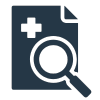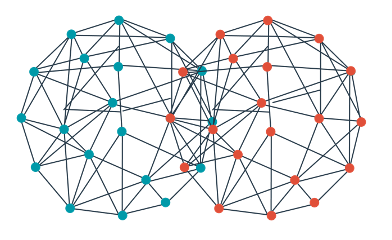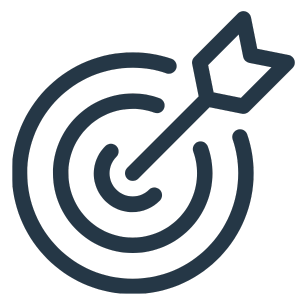
Health systems and clinics need serious strategies to do more with less. Competition from retail care, workforce shortages, and pressure to improve quality performance are leaving providers’ resources stretched thin. They need sustainable methods and hyper-targeted patient segmentation audiences to drive revenue growth and meet their core business objectives.
Traditional patient segmentation allows health systems and clinics to stratify their patient population in terms of risk. Using simple data points like age and gender, systems and clinics can produce risk estimates and focus limited resources on their highest risk patients.
Artificial intelligence, or AI, has the power to develop incredibly accurate risk level predictions. The technology can power segmentation for very precise patient audiences composed of the highest risk patients. Over time, these patient audiences produce downstream revenue by optimizing patient mix and getting patients the care they need to get and stay healthy.
Traditional Patient Segmentation Falls Flat
Health systems and clinics segment their patients in order to stratify their patient population by risk. This allows them to focus resources on their highest risk patients, driving better health outcomes and generating revenue. Typically this may focus on one or two key data points like age and gender. However, a patient’s risk level may depend on a host of factors, including –
| Patient Mix Variables | ||||
|---|---|---|---|---|
 Age |
 Gender |
 Race and Ethnicity |
 Diagnoses |
 Lifestyle Factors |
 Family Health History |
 Smoking Status |
 Insurance Status |
 Blood Pressure / Cholesterol Level |
 Social Determinants |
While focusing outreach on subpopulations of patients is an important first step, it fails to deliver the level of targeting that health systems need. Some problems with this standard approach to outreach include limited capacity, extraneous relevance, inefficient, and costly.
AI-Powered Patient Mix Optimization
AI takes into consideration the wide range of characteristics that factor into a patient’s risk level to flip traditional patient segmentation on its head. In this way, AI-powered models can inform highly precise patient audiences.
Instead of applying simple analytics rules to patient data, AI models take real results to continuously inform and refine rules. They analyze 100 percent of all past “successes” and “failures” in order to most accurately identify the highest-risk patients. AI models also continuously learn and improve over time, developing more and more accurate predictions. The resulting patient audiences make outreach efforts much more efficient and are significantly more likely to result in downstream revenue than the traditional segmentation approach.
AI models trained on your patient data work by –
- Using criteria vetted by medical doctors and coders
- Identifying patterns among large amounts of data
- Constantly testing, training, and refining
- Delivering prioritized patient audiences based on risk, revenue potential, business objectives, and capacity

Hyper-targeted, fine-tuned patient mix optimization allows health systems and clinics to take a proactive approach to resource allocation and quality performance. They can drive the highest risk patients to the right appointment, at the right time. In a recent blog, we discussed four key reasons to optimize patient mix using AI:
- Make the best use of limited resources by hyper-targeting outreach efforts.
- Maximize quality of care metrics by bringing in high risk patients for needed services.
- Boost patient satisfaction by delivering the right message to the right patient at the right time.
- Generate downstream revenue growth.
Let's walk through one of the key reasons to take advantage of AI for patient segmentation – downstream revenue growth.
Exponential Revenue Generation With AI-Powered Patient Segmentation
AI-powered patient segmentation has the ability to exponentially grow downstream revenue. Not only are AI-developed patient audiences smaller, more targeted, and more accurate, they have an incredible ability to predict necessary downstream interventions, driving revenue overtime.

Here’s how AI can drive exponential revenue growth.
- AI models can analyze 10,000+ EMR features to predict each patient’s health needs as well as likelihood of engagement.
- The predictions generated lead to significantly smaller patient audiences than a traditional approach to patient segmentation.
- The AI-developed patient audience has a 4X higher rate of getting a procedure or intervention.
- Expected revenue is >4X higher than the traditional approach to patient segmentation.
- AI models ingest new data on patient outcomes and refine their rules, developing more and more accurate predictions.
Take the example of cardiovascular outreach. A strategic effort to identify patients in need of a cardiovascular intervention results in vastly different results depending on how patient audiences are identified.
| Traditional Approach | AI-Powered Approach | |
| Number of patients identified for outreach | 1.3 million | 165,000 |
| Percent getting cardiovascular surgery or procedure | 0.31% | 1.3% |
| Number of patients required to be seen for every one in need of surgery or procedure | 325 | 77 |
| Days to fill 1,000 appointmentsa | 167 days | 84 daysb |
| If you had capacity for 1,000 patients, how many patients would you expect to find that need a cardiovascular surgery or procedure? | 3 | 13 |
| Expected revenue from surgeries or proceduresc | $53,000 | $225,000 |
| The AI-powered difference | +$172,000 | |
b. Assuming 40% response rate due to improved targeting efforts
c. Assuming $17,000 per procedure
In the above example, leveraging AI for patient mix optimization results in 4.25X revenue. Over time, as AI-powered models learn more about a system or clinic’s unique patient population, the accuracy of its predictions will increase and result in greater downstream value.
Cardiology is not the only area where AI can deliver highly accurate patient audiences. Models trained on patient data can inform outreach for preventive care such as colonoscopies, mammograms, and general annual wellness visits. By reaching the patients who could benefit most from this type of care – and who are most likely to engage in care – systems and clinics can directly drive revenue as well as increase patient loyalty and lifetime value.
AI-powered patient segmentation can also drive interventions for patients with chronic conditions, multiple comorbidities, or other risk factors. It can be used to generate patient audiences who are prime candidates for bariatric surgery, joint replacements, and other procedures. Depending on a system or clinic’s particular business objectives, AI can be used to power patient audiences most likely to result in needed interventions.
AI and the Future of Healthcare
From digital imaging to precision medicine, AI is transforming the way medicine is and will be practiced. It will only continue to deliver increasing benefits for providers and patients alike.
But AI is not just the future – models can be trained today to inform patient segmentation and deliver highly precise patient audiences. Health systems and clinics who are competing for consumers and workforce with retail clinics, virtual care options, and other regional competitors need ways to do more with less. AI can deliver on its promise today and exponentially drive revenue for health systems and clinics of all sizes.
Interested in exploring how AI can transform your health system or clinic? Connect with the Actium Health team today.


